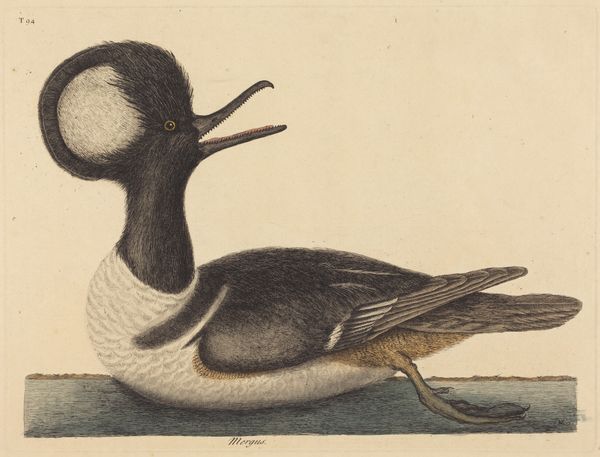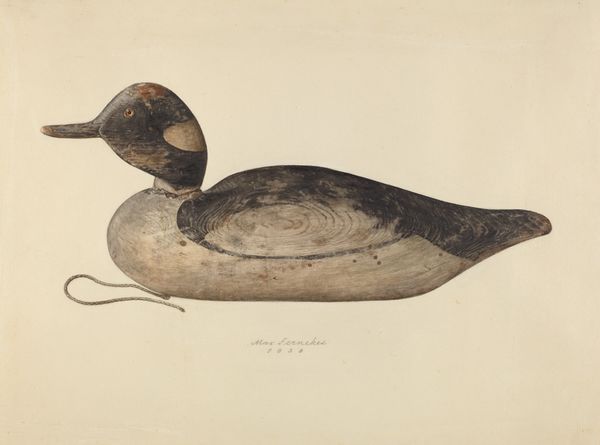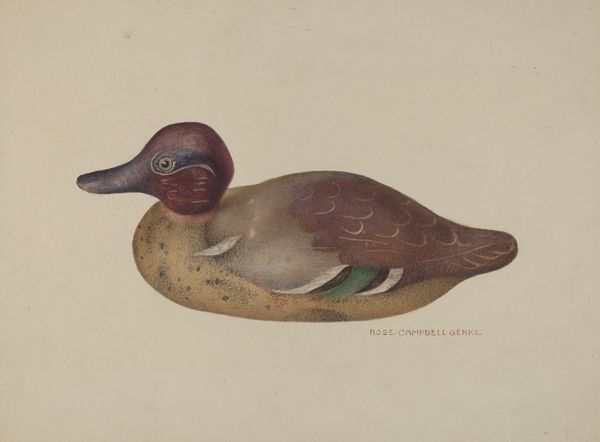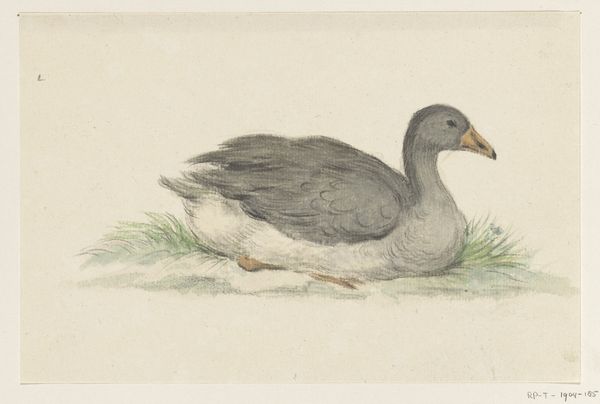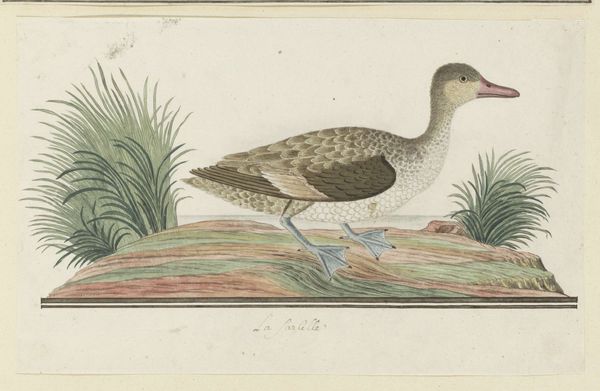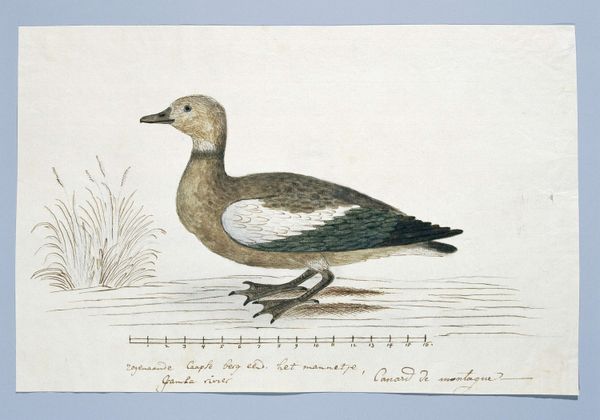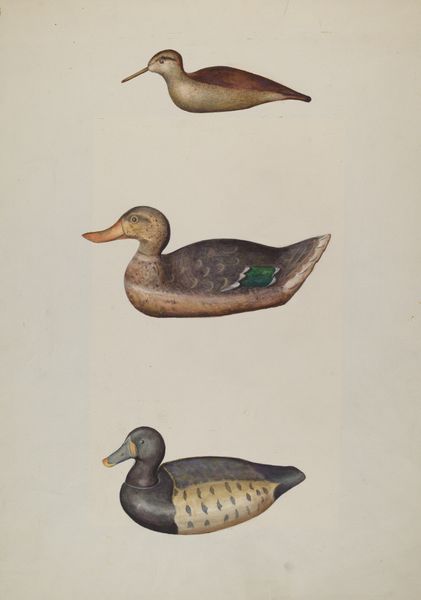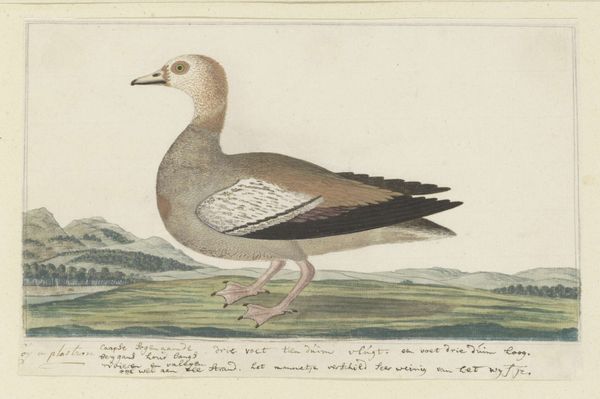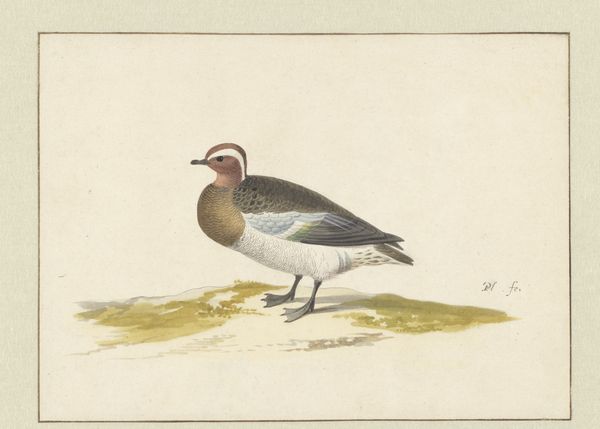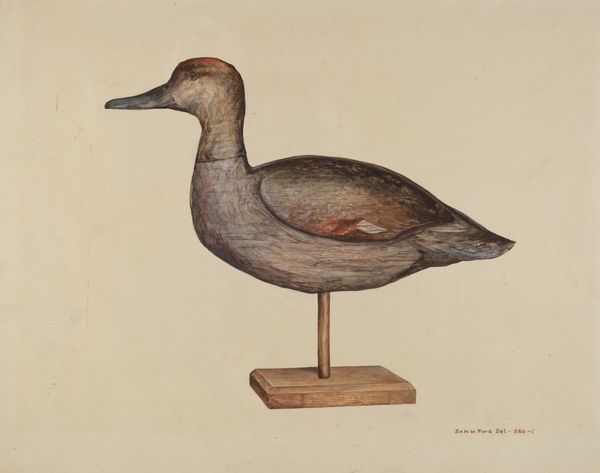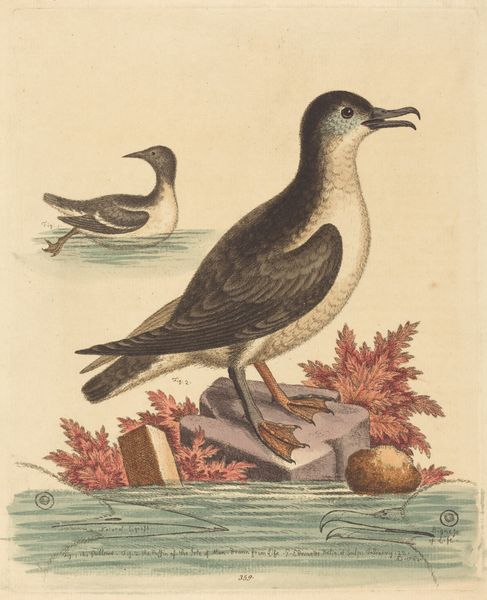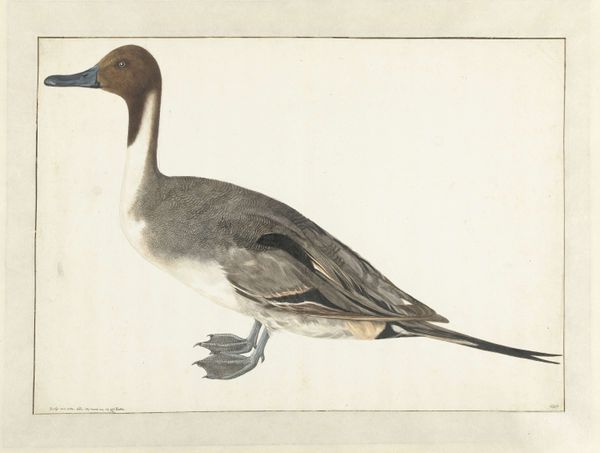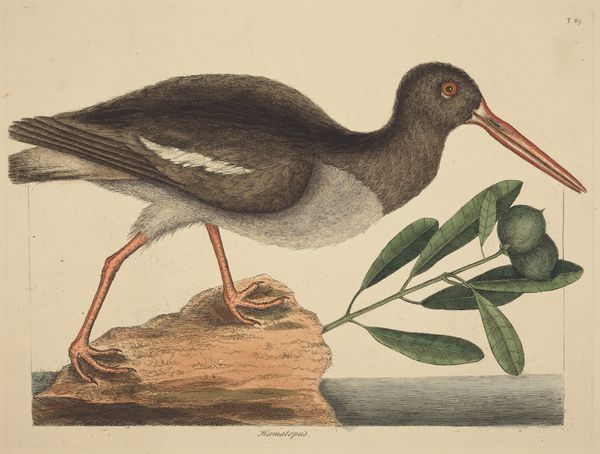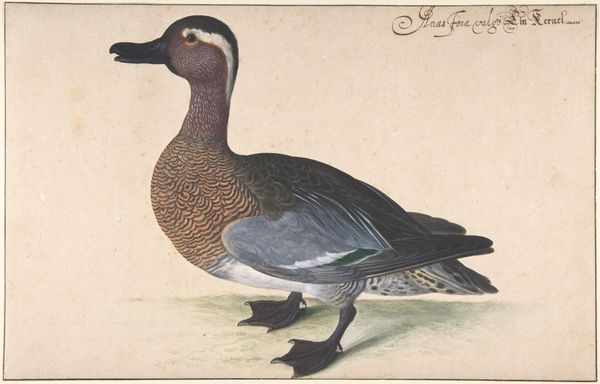
coloured-pencil, print
#
portrait
#
coloured-pencil
# print
#
landscape
#
coloured pencil
#
watercolour illustration
#
watercolor
#
realism
Dimensions: plate: 26.7 x 35.4 cm (10 1/2 x 13 15/16 in.) sheet: 28.1 x 41.6 cm (11 1/16 x 16 3/8 in.)
Copyright: National Gallery of Art: CC0 1.0
Editor: We're looking at "The Little Brown Duck (Anas rustica)," a coloured pencil print by Mark Catesby, dating back to possibly 1754. I’m struck by its stillness; the duck is so calmly posed. What stands out to you in this piece? Curator: Well, beyond the immediate aesthetic, it's crucial to understand the historical context. Catesby was one of the first naturalists to document North American flora and fauna extensively. This image isn't just a pretty picture of a duck. It reflects a very particular moment of colonial encounter and scientific exploration, right? Editor: Right, it’s documentation. Curator: Exactly, and that documentation is never neutral. Consider how indigenous knowledge of this landscape was systematically ignored or appropriated by these "scientific" expeditions. Catesby's work contributes to a history where the land and its creatures are being cataloged and possessed, often erasing pre-existing understandings. Look at how isolated the duck is from its broader ecosystem. What does that say about how nature was perceived at the time? Editor: So, the seemingly objective scientific illustration is actually imbued with power dynamics and colonial undertones? Curator: Precisely! And thinking about gender, how does Catesby's male gaze potentially shape the representation of this female duck, literally 'minor', within a patriarchal structure that has historically silenced women? What visual choices reinforce or challenge those power structures? The colour? The pose? What do you think? Editor: I hadn’t considered that angle at all. Now I'm seeing how much more there is to this than just a picture of a duck! Curator: That's the power of looking through a critical lens! Art is never created in a vacuum; it's always embedded in a web of social and political meanings. I learned that even depictions that appear factual and scientific also participate in the rhetoric and ideology of the artist.
Comments
No comments
Be the first to comment and join the conversation on the ultimate creative platform.
